
The Timeless Allure of the Historical Museum of Crete
Discover the rich tapestry of Crete's history at the Historical Museum of Crete in Heraklion, where ancient artifacts and modern exhibits come to life by the Aegean Sea.
Nestled in the heart of Heraklion, the Historical Museum of Crete is a treasure trove of the island's rich past. This museum offers a captivating journey through the ages, from the early Christian period to the modern era. It is an essential destination for history enthusiasts and casual visitors alike, providing a deep dive into Crete's unique culture and heritage. The museum's exhibits are meticulously curated, showcasing artifacts, paintings, and models that narrate the story of Crete. One of the highlights is the impressive collection of Byzantine icons, which offer a glimpse into the island's religious history. The museum also houses works from renowned artists such as El Greco, whose early works can be found here, offering insight into his artistic evolution. In addition to its permanent collections, the Historical Museum of Crete frequently hosts temporary exhibitions, lectures, and cultural events, making each visit a unique experience. The museum's location, overlooking the beautiful Aegean Sea, adds to the charm, providing a serene backdrop to your exploration of Crete's storied past.
Local tips in Historical Museum of Crete
- Visit early in the morning or late in the afternoon to avoid crowds.
- Check the museum's schedule for temporary exhibitions and special events.
- Take advantage of the audio guides available for a more in-depth understanding of the exhibits.
- Don't miss the stunning views of the Aegean Sea from the museum's upper floors.
The Timeless Allure of the Historical Museum of Crete
Nestled in the heart of Heraklion, the Historical Museum of Crete is a treasure trove of the island's rich past. This museum offers a captivating journey through the ages, from the early Christian period to the modern era. It is an essential destination for history enthusiasts and casual visitors alike, providing a deep dive into Crete's unique culture and heritage. The museum's exhibits are meticulously curated, showcasing artifacts, paintings, and models that narrate the story of Crete. One of the highlights is the impressive collection of Byzantine icons, which offer a glimpse into the island's religious history. The museum also houses works from renowned artists such as El Greco, whose early works can be found here, offering insight into his artistic evolution. In addition to its permanent collections, the Historical Museum of Crete frequently hosts temporary exhibitions, lectures, and cultural events, making each visit a unique experience. The museum's location, overlooking the beautiful Aegean Sea, adds to the charm, providing a serene backdrop to your exploration of Crete's storied past.
Iconic landmarks you can’t miss
Heraklion Archaeological Museum
Explore the depths of ancient civilization at Heraklion Archaeological Museum, home to the finest Minoan artifacts and a cultural hub in Crete.

Natural History Museum of Crete
Explore the Natural History Museum of Crete, where interactive exhibits and stunning displays reveal the island's rich biodiversity and geological history.

Historical Museum of Crete
Explore the fascinating history of Crete at the Historical Museum, showcasing artifacts from ancient to contemporary times in the heart of Heraklion.

Venetian Gate St. George
Experience the historical allure of the Venetian Gate St. George, a stunning landmark in Heraklion, Crete, reflecting the island's rich Venetian heritage.

St. Catherine's Museum
Discover the spiritual heart of Crete at St. Catherine's Museum, where Orthodox art and history come to life in a serene and captivating setting.

Yenicar Aga Fountain
Explore the stunning Yenicar Aga Fountain in Heraklion, a historical landmark showcasing Venetian architecture and vibrant local culture.

Statue of El Greco
Discover the Statue of El Greco in Heraklion, a monumental tribute to the artist's legacy amidst the vibrant Cretan culture.

Old Anchor
Discover the enchanting Old Anchor in Heraklion, a vibrant tourist attraction that showcases Crete's rich history and lively atmosphere.

Pastry History Museum
Discover the art of Greek pastry making and savor the sweet history at the Pastry History Museum in Heraklion.

Monument of the Duke of Beaufort
Explore the Monument of the Duke of Beaufort in Heraklion, a historical landmark that showcases the city's rich Venetian heritage.

Unmissable attractions to see
Heraklion Archaeological Museum
Unveil the rich tapestry of Minoan civilization at Heraklion Archaeological Museum, a premier destination for history enthusiasts and curious travelers.

Morosini Fountain
Discover the historical charm of Morosini Fountain in Heraklion, a stunning Venetian landmark surrounded by lively cafes and rich culture.

Rocca a Mare Fortress
Explore the enchanting Rocca a Mare Fortress, a historical gem in Heraklion, Greece, revealing centuries of rich maritime heritage and stunning coastal views.

Historical Museum of Crete
Explore the rich history and culture of Crete at the Historical Museum of Crete, where ancient artifacts meet modern storytelling.

Venetian Gate St. George
Discover the Venetian Gate St. George, a historical landmark in Heraklion that showcases the beauty and charm of Crete's rich heritage.

Ottoman Pumphouse
Explore the Ottoman Pumphouse in Heraklion, a stunning historical landmark showcasing Ottoman architecture and the vibrant culture of Crete.
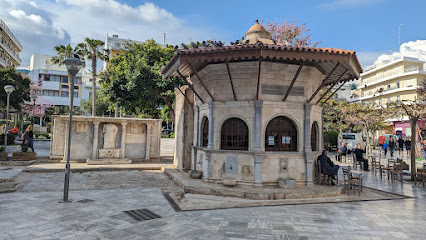
Yenicar Aga Fountain
Explore the historic Yenicar Aga Fountain in Heraklion, a stunning Ottoman-era landmark that captures the essence of Crete's rich cultural heritage.

Essential places to dine
Peskesi
Experience authentic Cretan flavors at Peskesi in Heraklion - where tradition meets modern Greek dining in a charming atmosphere.
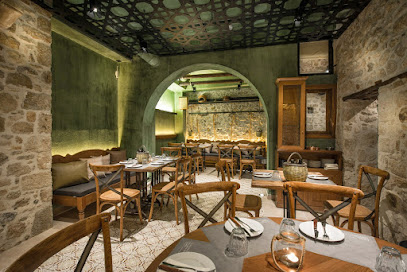
Apiri greek_eatery
Experience authentic Mediterranean cuisine at Apiri Greek Eatery in Heraklion, where traditional flavors meet warm hospitality.

Amalia's Kitchen
Experience authentic Cretan cuisine at Amalia's Kitchen in Heraklion – where tradition meets modern flavors in a cozy atmosphere.

Athali Cretan Cuisine
Discover the essence of Crete at Athali Cretan Cuisine - where authentic flavors meet warm hospitality.

Arismari & Varsamo
Experience authentic Greek cuisine at Arismari & Varsamo in Iraklion - where tradition meets taste for an unforgettable dining adventure.
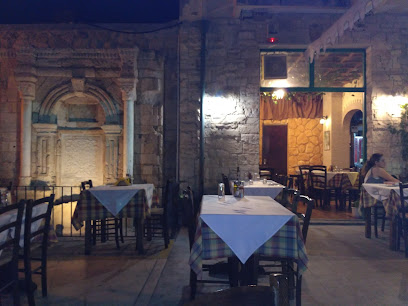
Veneto
Savor authentic Greek dishes in Heraklion at Veneto - where tradition meets flavor in every bite.

Chagiati
Experience authentic Cretan cuisine at Chagiati in Heraklion, where cozy ambiance meets delicious local flavors.

Piazza Pastarella
Experience authentic Italian cuisine at Piazza Pastarella in Heraklion - where every meal is a celebration of flavors.

Anchorage Traditional Mezedopolion
Discover the heart of Cretan cuisine at Anchorage Traditional Mezedopolion—where every dish tells a story.

Herbs' Garden
Experience exquisite Cretan cuisine amidst stunning views at Herbs' Garden in Heraklion – a rooftop paradise for food lovers.

Markets, malls and hidden boutiques
Irida Family Workshop
Explore Irida Family Workshop in Heraklion for authentic Greek souvenirs and handcrafted treasures that capture the spirit of Crete.

ZALO
Explore ZALO in Heraklion for unique souvenirs and boutique gifts that embody the spirit of Crete, perfect for every traveler.

Woodpecker
Discover unique gifts, toys, and jewelry at Woodpecker in Heraklion - your perfect stop for souvenirs and treasures from Crete.

Mayaba Store
Explore Mayaba Store in Heraklion for unique gifts, antiques, and handcrafted furniture that celebrate Cretan culture.

Moymoylidis, M. & S., O.E.
Discover unique Cretan gifts and souvenirs at Moymoylidis, a charming gift shop in the heart of Heraklion, Greece.

Spirit of Greece
Discover authentic Greek souvenirs at Spirit of Greece in Heraklion, where culture and craftsmanship intertwine in every unique piece.

Ble
Explore the heart of Crete at Ble Gift Shop, where unique treasures and authentic souvenirs await every traveler.

Eleni Kastrinoyanni
Discover unique Cretan souvenirs at Eleni Kastrinoyanni, a must-visit store in Heraklion for travelers seeking authentic local gifts.

Octapous
Explore Octapous in Heraklion for a treasure trove of unique gifts and authentic Cretan crafts that showcase the island's vibrant culture.

Krasagakis Antique Store
Discover unique antiques and vintage treasures at Krasagakis Antique Store, a must-visit for tourists in Heraklion seeking authentic Greek souvenirs.

Essential bars & hidden hideouts
Swing Thing
Swing Thing: Discover the best cocktails and vibrant nightlife in Heraklion, Greece, at this must-visit cocktail bar.
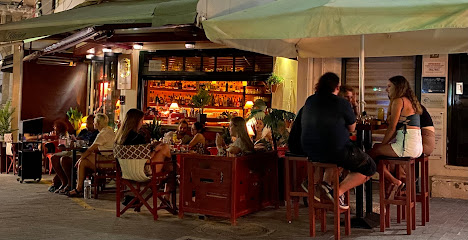
Polytechneio Cafe
Experience the heart of Heraklion at Polytechneio Cafe, where cozy ambiance meets delightful drinks and local charm.

The Bitters Bar
Discover the vibrant atmosphere and exquisite cocktails at The Bitters Bar, the premier cocktail destination in Heraklion, Greece.

Jailhouse Rock Bar
Experience the vibrant nightlife at Jailhouse Rock Bar in Heraklion, where great rum and fun meet in a lively atmosphere.

Guernica
Discover the vibrant nightlife of Heraklion at Guernica, where great drinks, music, and an inviting atmosphere await you.

THINK TANK
Experience the lively spirit of THINK TANK, a beloved bar in Heraklion, offering craft beers, fine wines, and a vibrant atmosphere perfect for socializing.

La Brasserie
Experience the charm of La Brasserie, a cozy bar and coffee shop in Heraklion, offering a delightful selection of drinks and snacks in a vibrant atmosphere.
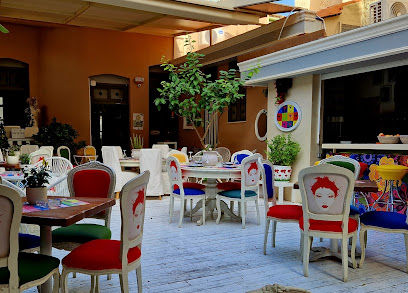
Craft Beer - Kapheneion
Experience the best of craft beer in Heraklion at Kapheneion, where local brews meet vibrant atmosphere and friendly service.
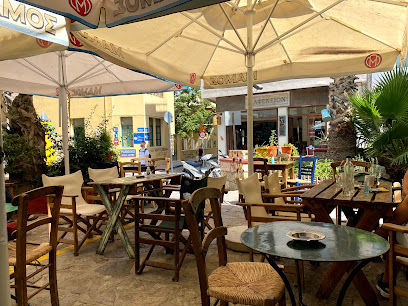
Rock n Rolling Stone
Experience the lively nightlife of Heraklion at Rock n Rolling Stone, where great drinks and music create unforgettable memories.

Stone Project
Experience the vibrant nightlife at Stone Project, Heraklion's top cocktail bar known for its innovative drinks and lively atmosphere.

Local Phrases
-
- HelloΓεια σας
[Yah sas] - GoodbyeΑντίο
[Andio] - YesΝαι
[Neh] - NoΌχι
[Ohi] - Please/You're welcomeΠαρακαλώ
[Parakalo] - Thank youΕυχαριστώ
[Efharisto] - Excuse me/SorryΣυγνώμη
[Signomi] - How are you?Πώς είστε;
[Pos iste?] - Fine. And you?Καλά. Εσείς;
[Kala. Esis?] - Do you speak English?Μιλάτε αγγλικά;
[Milate anglika?] - I don't understandΔεν καταλαβαίνω
[Den katalaveno]
- HelloΓεια σας
-
- I'd like to see the menu, pleaseΘα ήθελα να δω το μενού, παρακαλώ
[Tha ithela na do to menu, parakalo] - I don't eat meatΔεν τρώω κρέας
[Den troo kreas] - Cheers!ΥΓΕΙΑ!
[Yia] - I would like to pay, pleaseΘα ήθελα να πληρώσω, παρακαλώ
[Tha ithela na plirosso, parakalo]
- I'd like to see the menu, pleaseΘα ήθελα να δω το μενού, παρακαλώ
-
- Help!Βοήθεια!
[Voithia!] - Go away!Πήγαινε μακριά!
[Pigaine makria!] - Call the Police!Καλέστε την Αστυνομία!
[Kaleste tin Astynomia!] - Call a doctor!Καλέστε έναν γιατρό!
[Kaleste enan yatro!] - I'm lostΈχω χαθεί
[Eho hethi] - I'm illΕίμαι άρρωστος
[Eimai arrostos]
- Help!Βοήθεια!
-
- I'd like to buy...Θα ήθελα να αγοράσω...
[Tha ithela na agoraso] - I'm just lookingΑπλά κοιτάζω
[Apla kitazo] - How much is it?Πόσο κοστίζει;
[Poso kostizi?] - That's too expensiveΑυτό είναι πολύ ακριβό
[Afto ine poli akribo] - Can you lower the price?Μπορείτε να μειώσετε την τιμή;
[Borite na miisete tin timi?]
- I'd like to buy...Θα ήθελα να αγοράσω...
-
- What time is it?Τι ώρα είναι;
[Ti ora ine?] - It's one o'clockΕίναι μία ώρα
[Ine mia ora] - Half past (10)Μισή (10)
[Misi (deka)] - MorningΠρωί
[Proi] - AfternoonΑπόγευμα
[Apoyevma] - EveningΒράδυ
[Vradi] - YesterdayΧθες
[Hthes] - TodayΣήμερα
[Simera] - TomorrowΑύριο
[Aurio] - 1Ένα
[Ena] - 2Δύο
[Dio] - 3Τρία
[Tria] - 4Τέσσερα
[Tessera] - 5Πέντε
[Pente] - 6Έξι
[Exi] - 7Επτά
[Epta] - 8Οκτώ
[Okto] - 9Εννέα
[Ennea] - 10Δέκα
[Deka]
- What time is it?Τι ώρα είναι;
-
- Where's a/the...?Πού είναι ένας/η...
[Pou ine enas/i...] - What's the address?Ποια είναι η διεύθυνση;
[Pia ine i diefthinsi?] - Can you show me (on the map)?Μπορείτε να μου δείξετε (στο χάρτη);
[Borite na mou dixete (sto charti)?] - When's the next (bus)?Πότε είναι το επόμενο (λεωφορείο);
[Pote ine to epomeno (leoforeio)?] - A ticket (to ....)Ένα εισιτήριο (προς ....)
[Ena isitirio (pros ....)]
- Where's a/the...?Πού είναι ένας/η...
History of Historical Museum of Crete
-
The Historical Museum of Crete is located in Heraklion, a city that lies at the heart of the ancient Minoan civilization, which flourished from approximately 2700 to 1450 BC. The Minoans are known for their advanced architecture, intricate artworks, and complex societal structures. The museum showcases artifacts from this era, including pottery, frescoes, and tools, providing insight into the life and culture of one of Europe’s earliest civilizations.
-
During the Venetian occupation of Crete, from 1204 to 1669, Heraklion, then known as Candia, became a significant military and trade center. The influence of this period is evident in the architecture of the Historical Museum of Crete, which was originally built as a townhouse in the 19th century. The museum's collection includes Venetian artworks and artifacts that reflect the cultural exchange between the Venetians and the local population.
-
In 1669, Crete fell to the Ottoman Empire, and this period lasted until the late 19th century. The Historical Museum of Crete includes exhibits that illustrate the changes in Cretan society during Ottoman rule, showcasing how the blending of cultures influenced local traditions, arts, and crafts. Artifacts from this period highlight the complex identity of Cretan society, shaped by both Greek and Ottoman influences.
-
The museum also addresses the tumultuous events of the 20th century, including the Cretan Revolt against Ottoman rule and the subsequent unification with Greece in 1913. The impact of World War II, particularly the German occupation of Crete, is another focus, with exhibits detailing the resistance movements and the island's strategic importance during the conflict. This historical context enriches the visitor's understanding of contemporary Cretan identity.
-
In the late 20th and early 21st centuries, the Historical Museum of Crete has played a pivotal role in the cultural renaissance of Heraklion. The museum not only preserves artifacts but also promotes contemporary Cretan art and culture. It serves as a venue for exhibitions, workshops, and educational programs, fostering a dialogue between the past and present, and reinforcing the importance of heritage in modern Cretan society.
Historical Museum of Crete Essentials
-
The Historical Museum of Crete is located in the heart of Heraklion, easily accessible from various neighborhoods. If you are coming from the Heraklion International Airport (HER), you can take a taxi or a shuttle bus which takes approximately 15-20 minutes. From the central bus station (KTEL), local buses frequently operate routes to the city center. If you're staying in nearby areas like Agios Nikolaos or Rethymno, direct buses to Heraklion are available and take around 1 to 2 hours.
-
The Historical Museum of Crete is conveniently located near other attractions, making it easy to explore on foot. Public transportation options include local buses that connect various parts of the city. Bicycles can also be rented from nearby shops for a more leisurely exploration of the area. Taxis are readily available for longer distances or if you prefer not to walk.
-
Heraklion is generally safe for tourists, but it's wise to remain vigilant. Avoid poorly lit areas at night, particularly around the edges of the city. Petty crime, such as pickpocketing, can occur in crowded areas, so keep your belongings secure. Be cautious in less populated streets and always trust your instincts when assessing your surroundings.
-
In case of emergency, dial 112 for assistance in Greece. For medical emergencies, visit the nearest hospital, such as the University Hospital of Heraklion. Pharmacies are widely available and can provide basic medical supplies. It is advisable to have travel insurance that covers emergencies, and keep a list of local emergency contacts handy.
-
Fashion: Do dress modestly when visiting churches or religious sites; avoid overly revealing clothing. Religion: Do respect local customs, especially during religious ceremonies. Public Transport: Do offer your seat to elderly passengers; don't eat or drink on public transport. Greetings: Do greet locals with a smile and a handshake; don't forget to say 'Kalimera' (Good Morning). Eating & Drinking: Do try local Cretan dishes and accept food offerings; don't waste food or show dissatisfaction with meals.
-
To experience the Historical Museum of Crete like a local, consider visiting on a weekday to avoid the weekend crowds. Explore the nearby open-air markets for authentic local products. Engage with museum staff and local guides, who often have fascinating stories about the exhibits. Additionally, try to learn a few basic Greek phrases, as locals appreciate efforts to communicate in their language.
Nearby Cities to Historical Museum of Crete
-
Things To Do in Crete
-
Things To Do in Rethymno
-
Things To Do in Chania
-
Things To Do in Pyrgos
-
Things To Do in Santorini
-
Things To Do in Mykonos
-
Things To Do in Kos
-
Things To Do in Bodrum
-
Things To Do in Rhodes
-
Things To Do in Samos
-
Things To Do in Athens
-
Things To Do in Nafplio
-
Things To Do in Marmaris
-
Things To Do in Kalamata
-
Things To Do in Kusadasi








